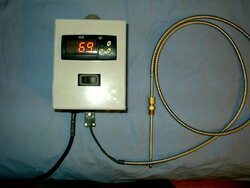Alright you stove and pyro aficionados!
I suspect you've answered this before, but I can't find a good thread for it...
What do you find is the correlation b/w your stove pipe temp and your stove TOP temp?
I haven't acquired my top thermometer as of yet (I should...), but I have a Condar flue gas thermometer installed on the pipe. With a good fire humming, it reads b/w 600-800 degrees. Do you think that this spec alone is sufficient to gauge how effectively the fire is burning? Does stove combustion have variables that make stove top and pipe temps sometimes differ in proportion to each other? One would quickly assume that if a fire is raging, the pipe temp should reflect that about as accurately as you would expect. Any arguments?
Have a warm MLK weekend. Hope you have an extra day off!
I suspect you've answered this before, but I can't find a good thread for it...
What do you find is the correlation b/w your stove pipe temp and your stove TOP temp?
I haven't acquired my top thermometer as of yet (I should...), but I have a Condar flue gas thermometer installed on the pipe. With a good fire humming, it reads b/w 600-800 degrees. Do you think that this spec alone is sufficient to gauge how effectively the fire is burning? Does stove combustion have variables that make stove top and pipe temps sometimes differ in proportion to each other? One would quickly assume that if a fire is raging, the pipe temp should reflect that about as accurately as you would expect. Any arguments?
Have a warm MLK weekend. Hope you have an extra day off!


